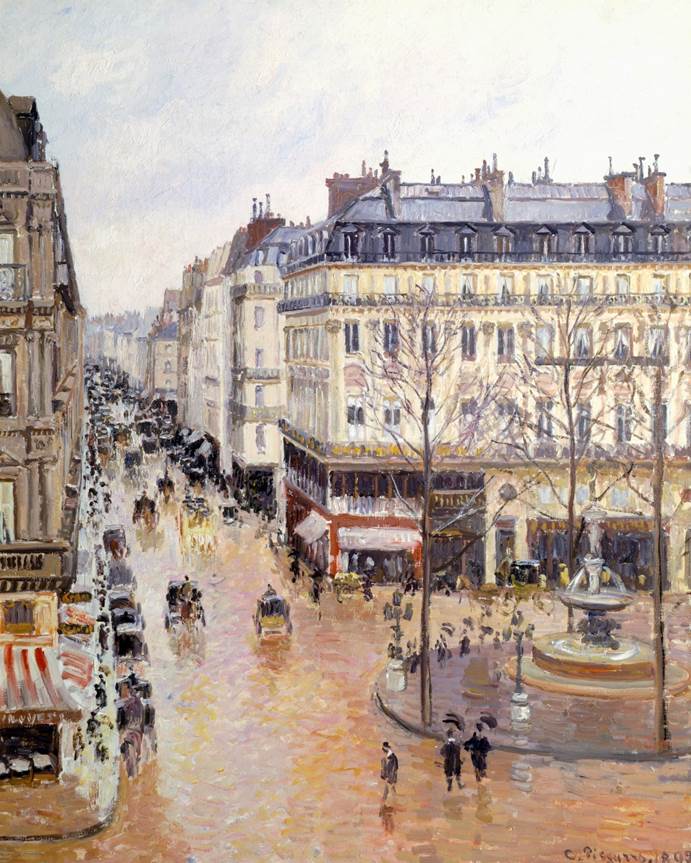One of the longest-running court cases in the United States about art looted by the Nazis has been decided in favor of the current possessor, the Thyssen-Bornemisza Museum in Madrid, an instrumentality of the Kingdom of Spain. The U.S. District Court in Los Angeles ruled on April 30, 2019 against the heirs of Lilly Cassirer, a German Jew whom the Nazis targeted in 1939 for a forced sale of Rue Saint–Honoré, après-midi, effect de pluie (1892). The ruling is the second time that the museum has prevailed in the District Court as the owner of the painting under Spanish law, now on the grounds the museum did not know of the painting’s looting history when it acquired the work and that it held the work publicly for long enough to become its owner even though it had been stolen. The ruling, while favorable to the museum in this case, confirms important principles about the inability of successive possessors to acquire good title to artworks stolen by the Nazis, and the importance of diligence and pursuing questions raised by red flags in the chain of title. Notable as well was the Court’s pointed criticism of Spain for failing to adhere to the spirit of the Washington Principles on Nazi-Confiscated Art, and Spain’s failure to “comply with its moral commitments.”
Thyssen-Bornemisza Prevails Over Cassirer Heirs' Claim to Pissarro Taken by Nazis Despite Acts “Inconsistent with the Washington Principles”
Topics: Walter Feilchenfeldt, Third Reich, Terezin Declaration, Gestapo, Lilly Cassirer, Claude Cassirer, Jacques Goudstikker, Nazi-looted art, Czechoslovakia, Spain, Washington Principles, Baron Hans-Heinrich Thyssen- Bornemisza, A Tragic Fate, Law and Ethics in the Battle Over Nazi-Looted Art, Reichskammer der bildenden Künste, flight taxes, Rue Saint–Honoré, Julius Cassirer, Paul Durand-Ruel, Ludwigstrasse, Dr. Cassirer and Co. Kabelwerke, Jakob Scheidwimmer, Sydney Schoenberg, Hahn Gallery, Thyssen-Bornemisza Museum, Military Government Law No. 59, Reich Chamber of the Visual Arts, Ari Walter Kampf, Eugen Kampf, Knoedler & Co. Gallery, encubridor
“Between Fairness and Justice for Successors and Possessors”—an Upcoming Conference at the Oskar Reinhart Museum in Winterthur
I won’t be in the neighborhood, but the Oskar Reinhart Museum in Winterthur (Switzerland) is putting on a conference for the second year in a row on August 31. 2015 wrestling with the issue of “flight goods” in particular. “Flight goods” refers to property that was not stolen outright, nor sold under duress, but left behind because of a flight in haste from persecution. Awareness has increased in recent years about this as a category of looted property to be addressed. As with other categories, issues of law, morality, and the rights of subsequent good faith owners/possessors make for interesting discussions. Notable presenters include Matthias Frehner, whose Kunstmuseum Bern is grappling with the Gurlitt bequest, and Anja Heuss, whose Staatsgalerie Stuttgart recently restituted a work to the heirs of I. Rosenbaum. All the speakers and topics look excellent.
Topics: Berlin, Dr. Peter Raue, Walter Feilchenfeldt, Esther Tisa Francini, Museum Rietberg, Olaf Ossmann, Cornelius Gurlitt, Marc Fehlmann, Art Dealers Association of Switzerland, Between Fairness and Justice for Successors and Po, Oskar Reinhart Museum, Anja Heuss, Kulturstiftung der Länder, Deutsches Zentrum Kulturgutverluste, Claudius Ochsner, Matthias Frehner, Alexander Jolles, Winterthur, Dr. Stephanie Tasch, Kunsthandelsverband der Schweiz, Karin Salm, Universität Salzburg, Thomas Buomberger, Restitution, Events, Johannes Nathan, Looted Art, World War II, Staatsgalerie Stuttgart, Switzerland, Kunstmuseum Bern, Andrea Baresel-Brand, flight goods, Zürich, Prof. Dr. Georg Graf, Radio SRF 2, I. Rosenbaum, Sibylle Ehringhaus



